“The Mutability of Memories and Fates” responds to the concept of cellular memory and cell fates, and explores how the cell packages DNA and what impact that has. The work focusses on the mutability of the cell, or what controls its constancy, and how this affects gene expression and the nature of life. It explores the desirability of a deeper understanding of cell biology and the significant impacts it will have on healthcare and disease prevention.
This major new body of artworks have arisen from in depth discussions with researchers at the Institute of Epigenetics and Stem Cells (IES) at the Helmholtz Zentrum München and through shared poetic and philosophical reflections on the research. The IES appointed Anna Dumitriu to be their first Artist in Residence in February 2020. Through the COVID-19 pandemic when travel was not permitted, work continued through online meetings and seminars, and then from September 2021 until 2024 through regular physical visits and hands-on lab work, with the project receiving a second tranche of funding in 2022.
The residency was co-ordinated by Professor Maria Elena Torres-Padilla (Director of the IES), Amelie J. Kraus (Scientific Coordinator of the Epigenetics@HMGU community), and the art-science curator Dr Claudia Schnugg.
Artworks
The Mutability of Memories and Fates (2024)

In order to understand whether induced pluripotent stem cells (IPSCs) still have a ‘memory’ (traces of previous differentiated cells that they once were, remaining in the chromatin structure of their DNA) Dumitriu proposed an experiment to take the exact same population of IPSCs, differentiate them into four different cell types and then turn them back to IPSCs. An important aim of epigenetics and stem cell research is to develop regenerative medicine, to extend life and perhaps to even create ‘spare parts’ for humans. The idea of ‘transformation’ of cells echoes the aims of the alchemists, and their desire for immortality. But if we had immortal lives what would we do with them? These cells turn from IPSCs, to neuronal progenitor cells (brain cells), back to IPSCs, to alveolar epithelial cells (lung cells), back to IPSCs, to cardiomyocytes (heart cells that actually beat in culture), back to IPSCs, and to hepatocytes (liver cells), and finally back to IPSC. Reminiscent of how we might deal with eternal lives, would we be artists for 100 years, the decide to become scientists for a while, or sleep for decades like ancient vampires might?
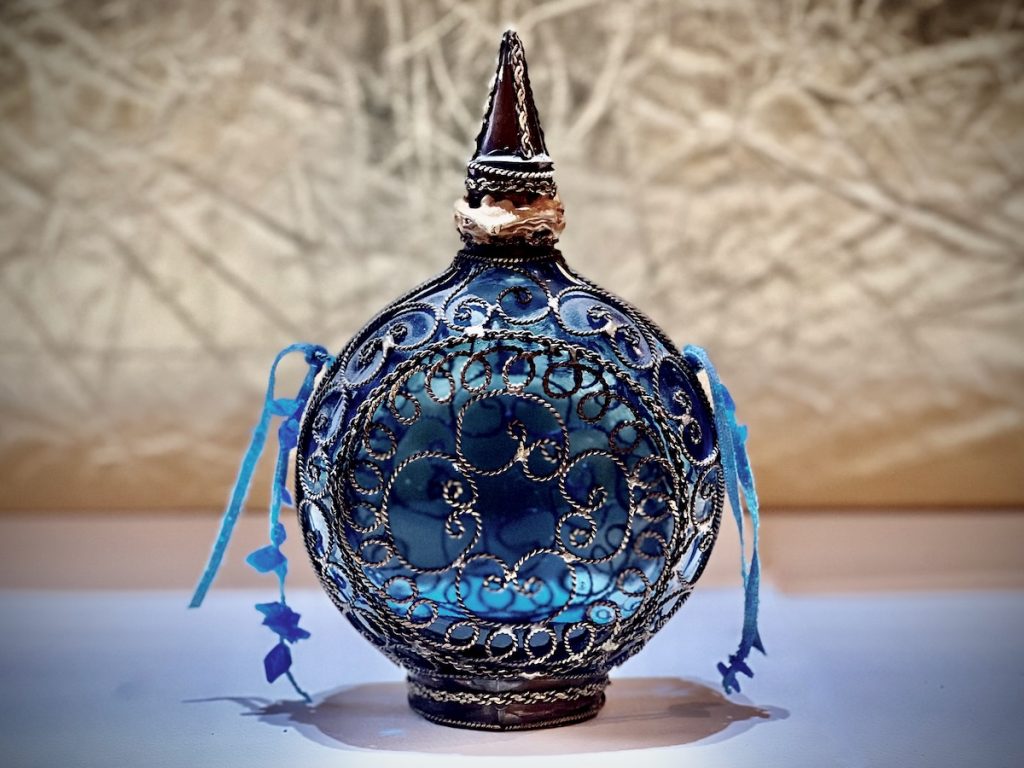
The piece comprises a video installation (portrait mode preferred (landscape is also available)) with a framed work comprising microscope slides of the actual cells in their different states alongside drawings, and a sealed decorative bottle containing a vial of the final cells that have lived four different lives. The bottle is reminiscent of one which might contain in mythology, a genie. Alluding to the idea that this technology has the potential to be like letting the genie out of the bottle.
From a technical perspective the project used mouse induced pluripotent stem cells (mouse iPSCs) containing the OSKM (Oct4, Sox2, Klf4, cMyc) cassette for reprogramming that can be induced by addition of doxycycline – meaning that upon addition of doxycycline to the medium the cells will reprogram to a pluripotent state, and an Oct4 gene fused to green fluorescent protein (GFP) reporter so that it is possible to track the expression of Oct4 by microscopy (so once the cells are stably reprogrammed they express Oct4 and be green).
The artist worked in collaboration with Federico Pecori, Marion Genet, and Maria Elena Torres-Padilla to create the cells, and Alex May to create the video.
Totipotence (2024)
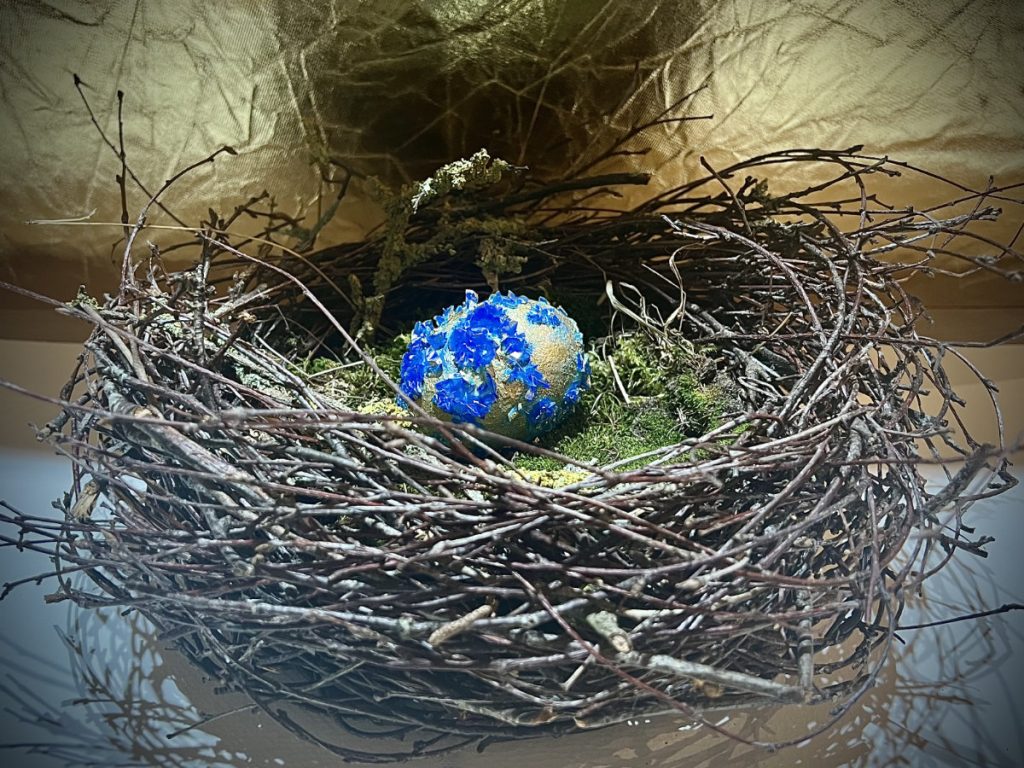
Dumitriu was interested in whether a bird’s egg would be considered ‘totipotent’ (wholly potent) like a human zygote, and this artwork explores that philosophical question. A golden goose egg (alluding the to the idea of the goose that lays the golden egg, and the importance of gold in alchemy), encrusted with copper sulphate crystals (that Dumitriu used in culturing cells in the lab during her residency), sits on a handmade bird’s nest impregnated with 2-cell-like-cells.
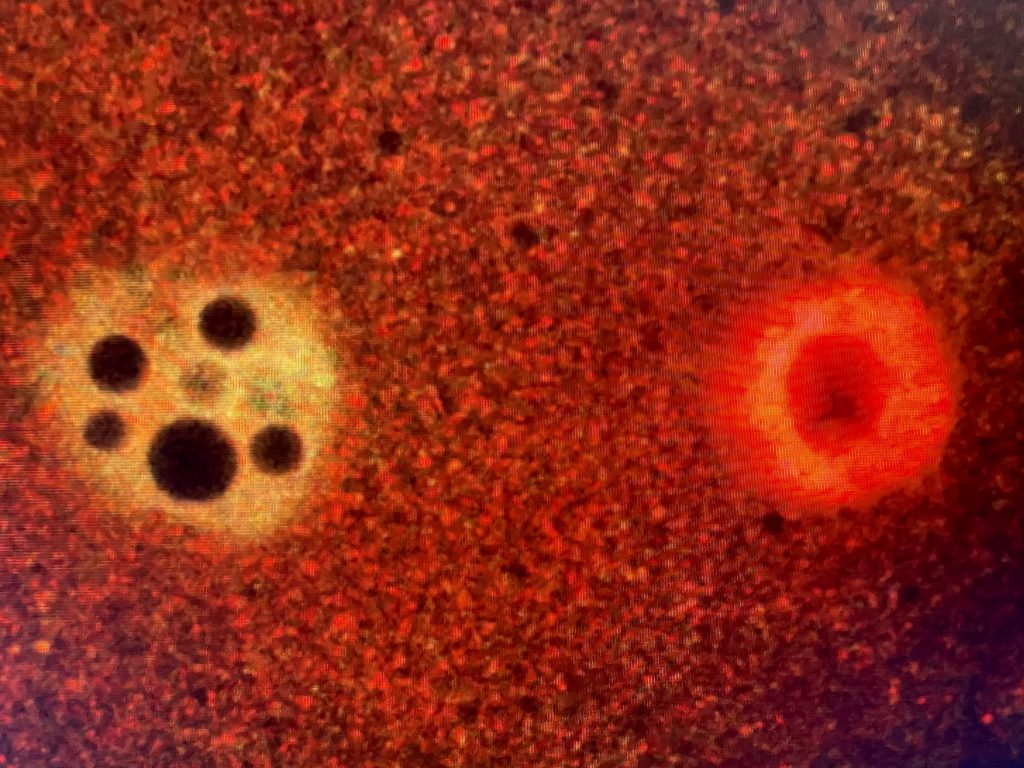
An induced pluripotent stem cell (IPSC) can be differentiated into almost any type of cell (except placenta). But totipotent cells (zygotes) can differentiate into every cell type (including placenta). To be able to create totipotent cells in vitro would be the gold standard for this research field, but at the moment this is difficult. Sometimes 2-cell-like-cells arise in vitro but they cannot be cultured in the same way as IPSCs. Anna Dumitriu collaborated with Adam Burton on this piece. The discussion between the artist and Professor Maria Elena Torres Padilla can be found below:
“I’m sorry if this is a silly question, but are bird’s eggs totipotent? Or how does it work?” [Anna Dumitriu]
“In principle the answer is, I would say yes (e,g any egg which will generate a full organism is totipotent ) – BUT – the concept is rather used in mammalian embryology rather than in e.g. frogs, chicken/duck etc. this is where it becomes semantic/philosophical – the egg itself is already ‘partitioned’ into two parts : the yolk and the ‘embryo’ – it has already two identities, so to say – the yolk will provide the food, as we know – and only a tiny part in the yellow (the embryo, sometimes seen as ‘blood’ spot in the yellow) will actually form the embryo – this is, I would say, why the totipotent word is not used here, because there are already two identities within the ‘egg’ whereas in mammals it is one single cell (the zygote) which will further split into two before implantation (the trophectoderm and the inner cell mass), and the support of the embryo (the trophectoderm, which will form the placenta) is only emerging later from this one cell (as opposed to the other species).” [Maria Elena Torres-Padilla]
Cellular Reprogramming Necklace
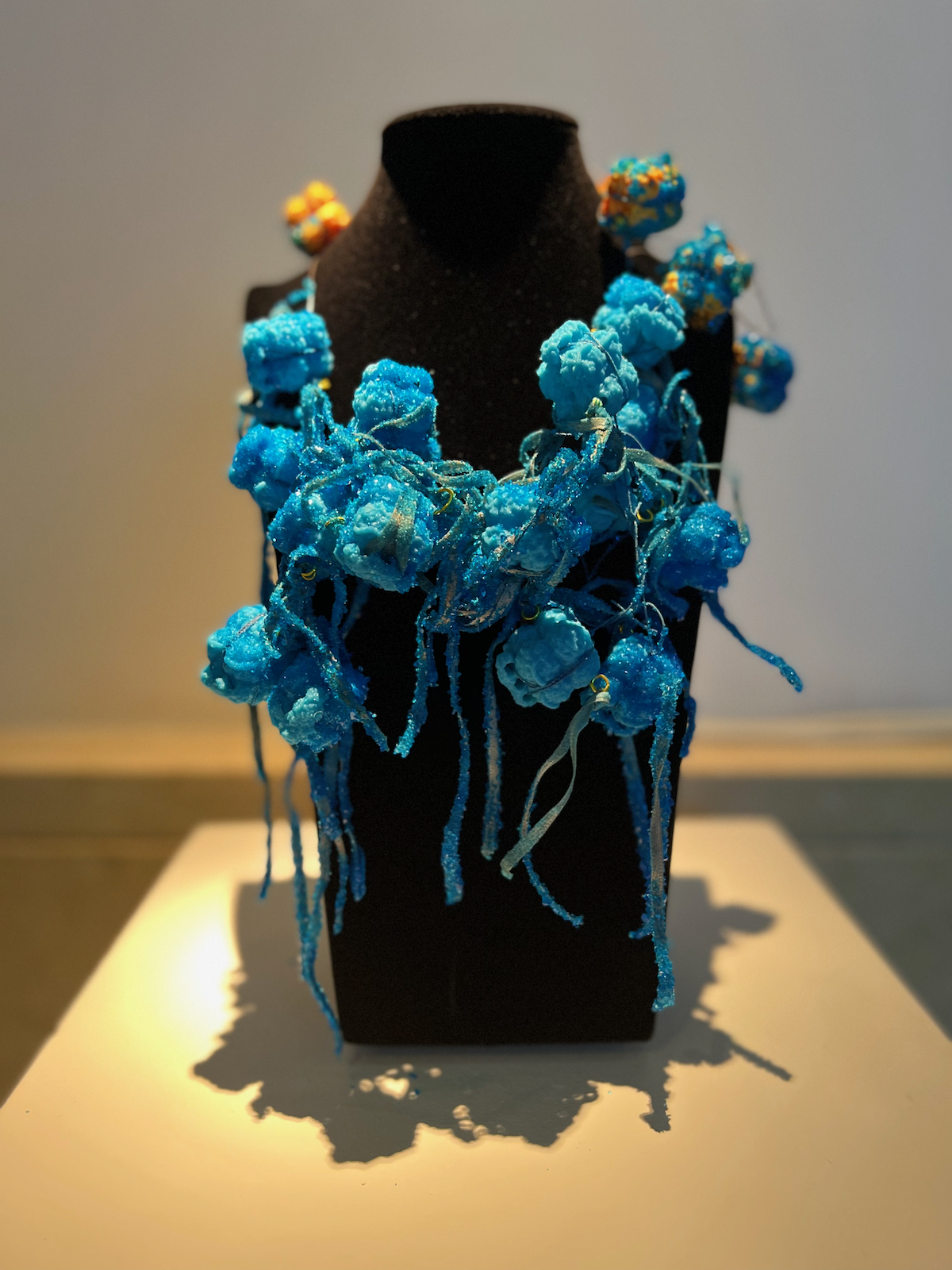
A sculptural necklace physically represents the chromatin structure of the OCT-4 gene. This gene important for inducing an embryonic stem cell-like state, in effect wiping the memory of the cell (at least to a degree) and giving it the potential to become a different kind of cell. In eukaryotic cells (cells with nuclei) DNA is wrapped around histones and the tightness of this binding either prevents or allows the expression of genes. The necklace is embedded with extracted heterochromatin and euchromatin from the OCT-4 gene.
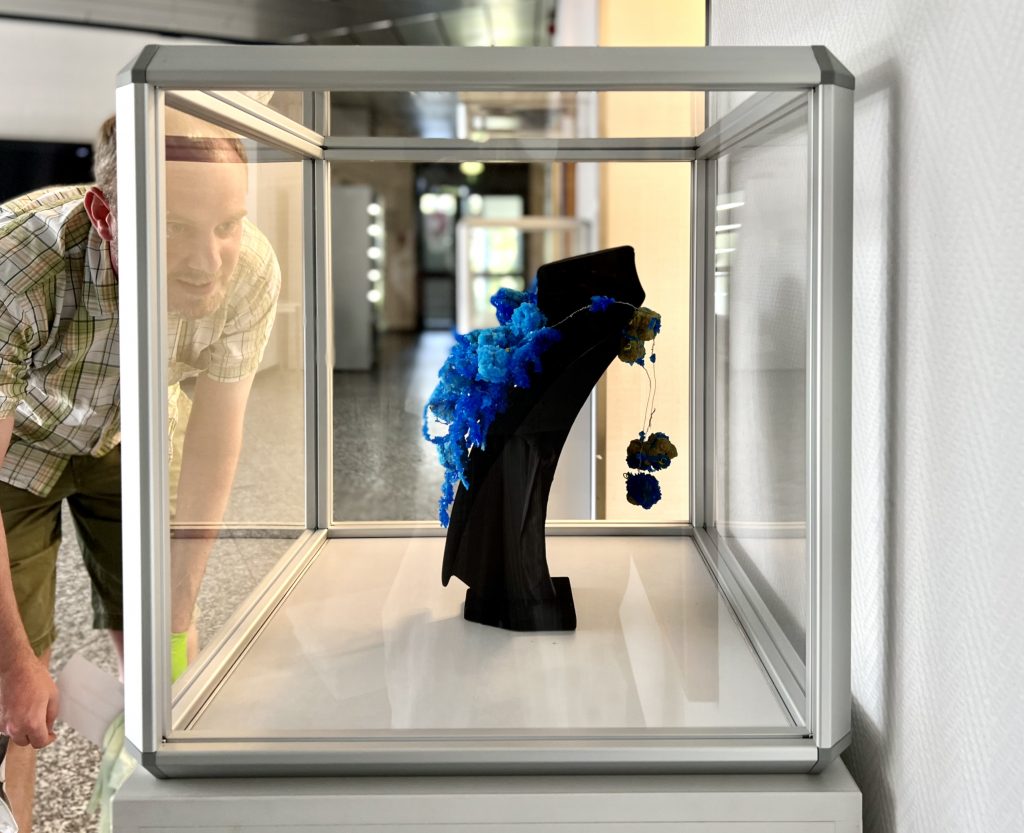
Following an exhibition at the Deutsches Museum in Munich Germany the artist ran a workshop with researchers at the Institute of Epigenetics and Stem Cells (IES) at the Helmholtz Zentrum München Dumitriu led a workshop with researcher to create 3 versions of the piece. One necklace is on exhibition in the foyer of the Institute of Epigenetics and Stem Cells and the others have been shown in numerous exhibitions.
Thanks to Maria-Elena Torres Padilla and Adam Burton for their scientific support and Alex May for 3D modelling support.
Cellular Memory
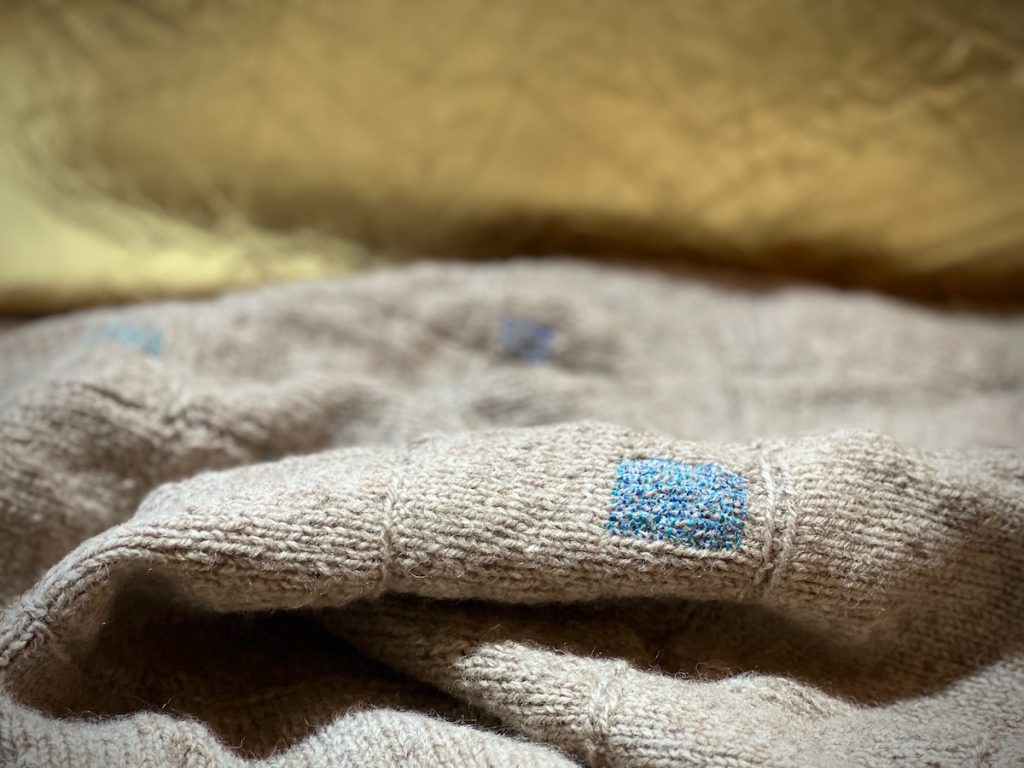
This fibre based artwork references the difficulties of returning a differentiated cell to the form of a pluripotent stem cell and explores the question of whether cells have memories. Here Dumitriu makes reference to the way that wool that has been unpicked and reknitted still seems to have a ‘memory’ of the garment it previously was. In this work knitted squares have been washed, shrunk, partly unpicked and reknitted. The re-knitted parts still show the scars of the previous knitted form. The knitting is impregnated with induced pluripotent stem cells.
Thanks to Eleanor Hyland-Stanbrook and Claudia Schnugg for their support with the knitting. Dumitriu has also visibly mended holes in the knitting using embroidery silk, in reference to the mechanisms in DNA that can cut and patch flaws in the sequence.

Exhibitions and Outcomes
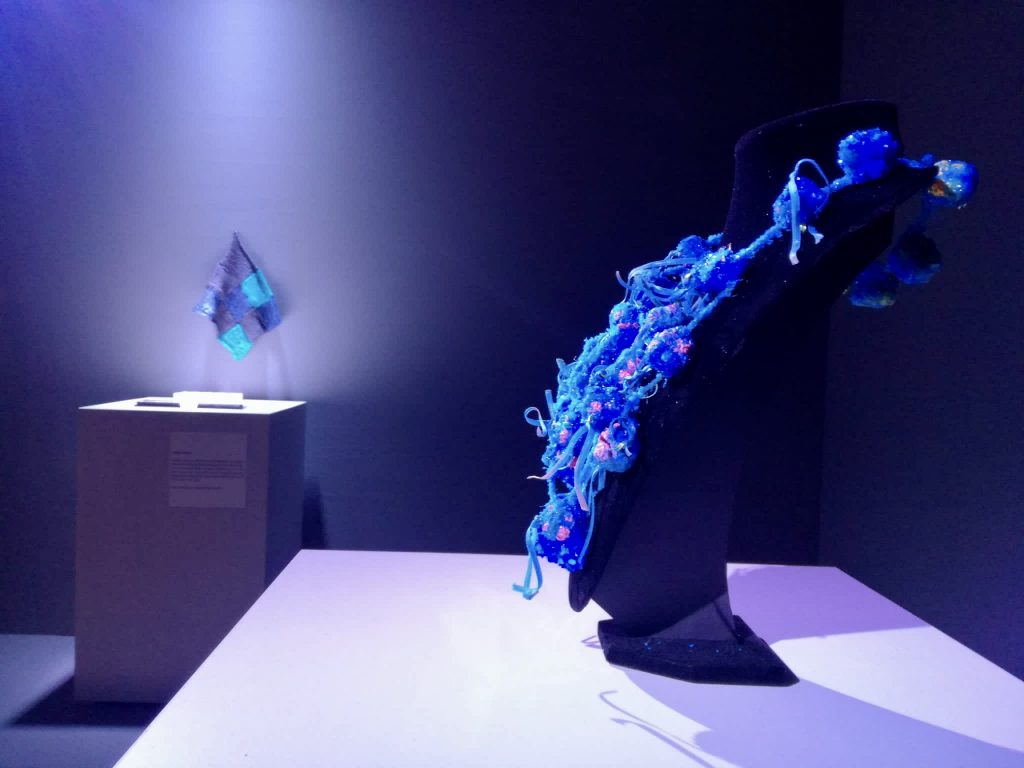
A work-in-progress showcase of the Cellular Reprogramming Necklace and Cellular Memory took place at the Deutsches Museum in Munich for the 60th Anniversary of the Helmholtz Zentrum on 18th November 2021.
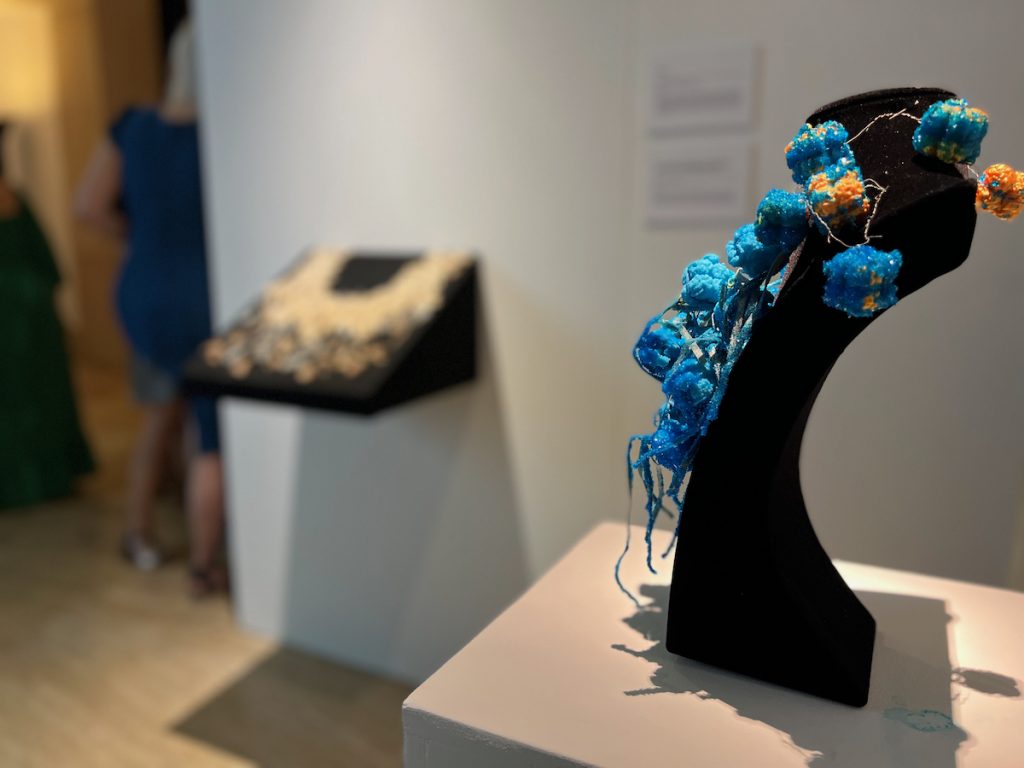
The Cellular Reprogramming Necklace was part of “BioArt Alchemy” a solo exhibition of works by Anna Dumitriu at Spazju Kreattiv in Valletta, Malta, from 16th September 2022 – 30th October 2022.
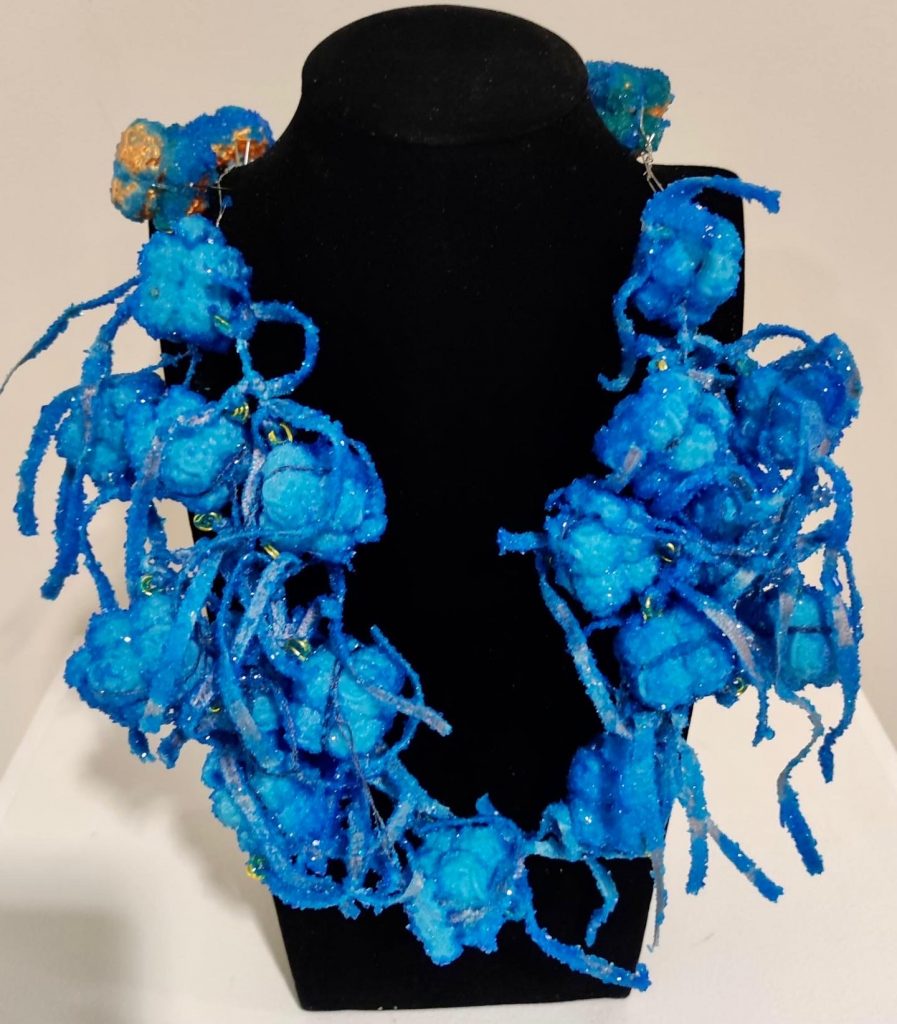
The Cellular Reprogramming Necklace and Cellular Memory were exhibited at the EPIC Conference, a joint conference by the three specialist science networks: EpiGene3Sys, ChromDesign and INC-Spain that took place from 17th to 20th October 2022 in Granada, Spain.
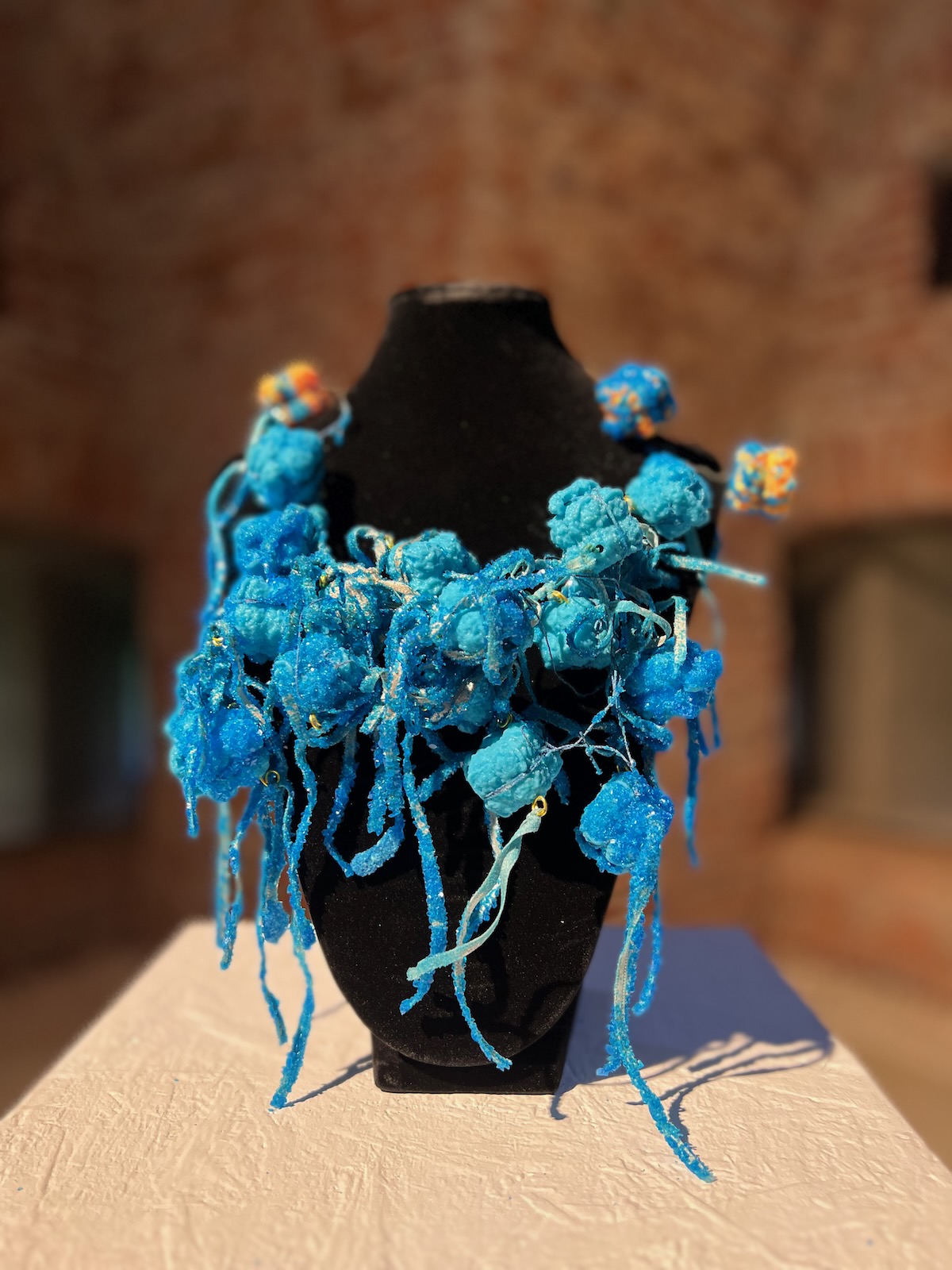
The Cellular Reprogramming Necklace was part of BioArt Revolution/ Revoluția BioArt, an innovative solo exhibition by Anna Dumitriu which brought together contemporary artistic approaches and modern scientific experiments to address issues of global relevance such as infection, climate change, and diversity. The show took place as part of Timișoara 2023 European Capital of Culture, from 30th September to 1st October 2023. The exhibition, which was created in collaboration with the Romanian Science Festival, took place in the stunning setting of Bastionul Maria Theresia, Galeria 2, Str. Hector, nr. 1, Timișoara, Romania.
The Cellular Reprogramming Necklace was part of BioArt Knowledge: A Solo Exhibition by Anna Dumitriu at the Yarrow Gallery in Oundle, Near Peterborough, UK, from 9th November – 6th December 2023.
The Cellular Reprogramming Necklace was part of “The Alchemist” BcmA Gallery, Berlin, Germany, 22nd January – 9th February 2024

The project was presented at LMU Biozentrum (Munich, Germany) on 12th June 2024 as part of the “Encounters in Art and Biology” Symposium.
A new solo exhibition will bring together of all the works from the “The Mutability of Memories and Fates” series for the first time at Alte Schmiede, Pernerinsel, Hallein, Austria from 5th – 9th September 2024. There will be an accompanying artists talk on 3rd September 2024, a panel discussion and exhibition opening on 5th September 2024 as well as an additional events programme to be announced.
Workshops
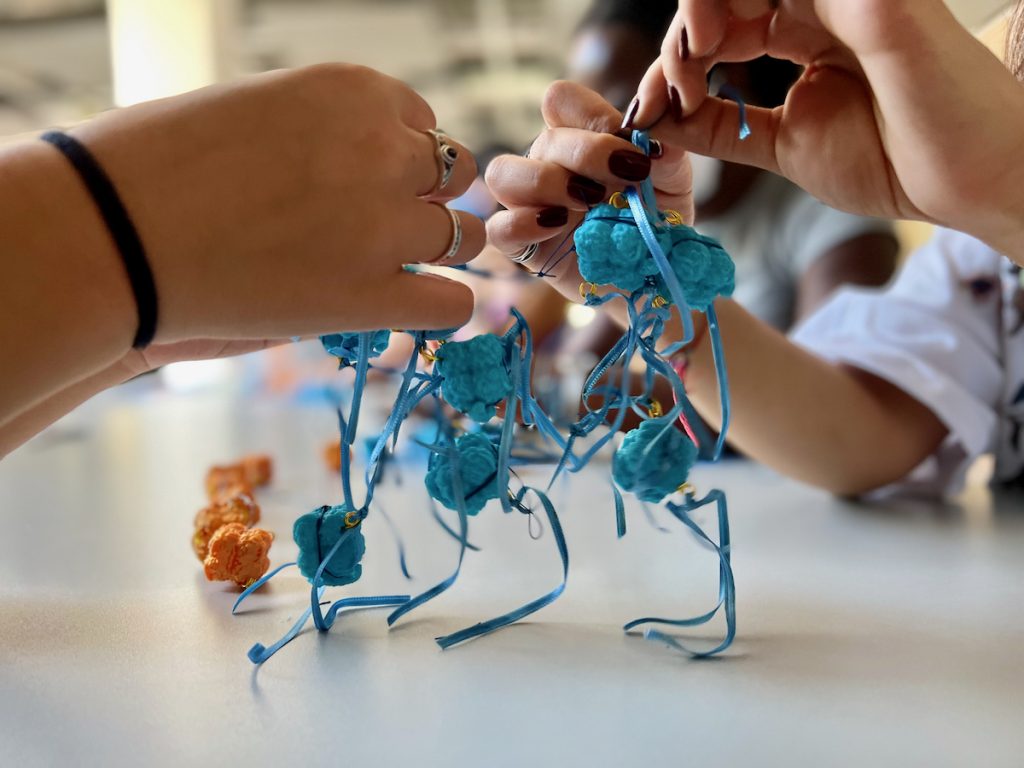
Anna Dumitriu lead an in-person workshop at the Institute of Epigenetics and Stem Cells at the Helmholz Zentrum in Munich (Germany) exploring cellular reprogramming and cell memory, as part of her art residency, on 10th August 2022
Awards
“The Mutability of Memories and Fates” was a finalist in Falling Walls 2024 (Berlina) competition in the Art and Science Category.
